In general, mechanical transmissions used for stepping and servo motor drives generally have the following types:
mechanism
Features
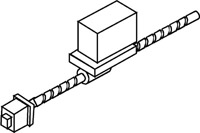
Ball screw (direct connection)
For high precision positioning with short distances.
The motor and ball screw are only connected with couplings and there is no clearance.

Ball screw (deceleration)
Selecting the reduction ratio increases the torque transmitted to the mechanical system.
Due to the backlash of the gear, compensation measures need to be taken.
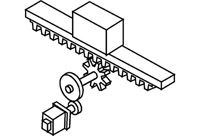
Rack and pinion
For longer distances (car drive, etc.) positioning.
The rotation of the pinion contains a π value and therefore needs correction.
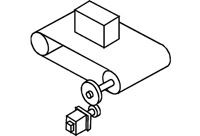
Timing belt (conveyor belt)
Compared with the chain, the degree of freedom in form becomes larger.
Mainly used for light loads.
The amount of movement of one revolution of the pulley includes a value of π and therefore needs correction.
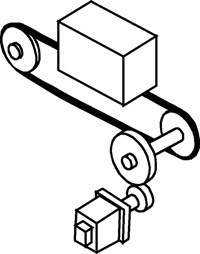
Chain drive
Used for conveyor lines. Must take into account the elongation of the chain itself and take appropriate measures. In the case where the speed reduction ratio is relatively large, the movement speed of the mechanical system is small.
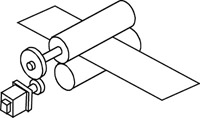
Feed roller
Sandwich the material on the plate with the roller and send it out.
Since the diameter of the roller is not strictly determined, an error will occur on a long-sized object and π compensation will be required.
If it accelerates sharply, slippage will occur and the amount of delivery will be insufficient.
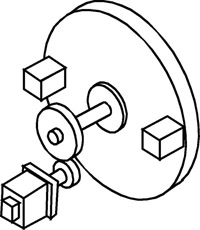
Turntable indexing
The moment of inertia of the turntable is large, and it is necessary to set a sufficient reduction ratio.
The rotating speed of the turntable is low, and more worm gears are used.

Spindle drive
When winding the wire rod, it is necessary to set a sufficient reduction ratio due to the large moment of inertia.
In peripheral speed control, peripheral machinery must be considered.
When using a servo system in a mechanical system, note the following points:
1 reduction ratio
In order to make effective use of the power of the servo motor, it should be used in a range close to the rated speed (maximum rotation speed) of the motor. Continuous output torque at the highest rotation speed is still smaller than the rated torque.
2 preload torque
Preloading the screw increases the rigidity and increases the load torque.
For the friction torque generated by the preload, refer to the Ball Screw Specification.
3 holding torque
When the elevator machine stops, the servo motor continues to output the holding force.
In times of plenty, it is recommended to use the holding brake.